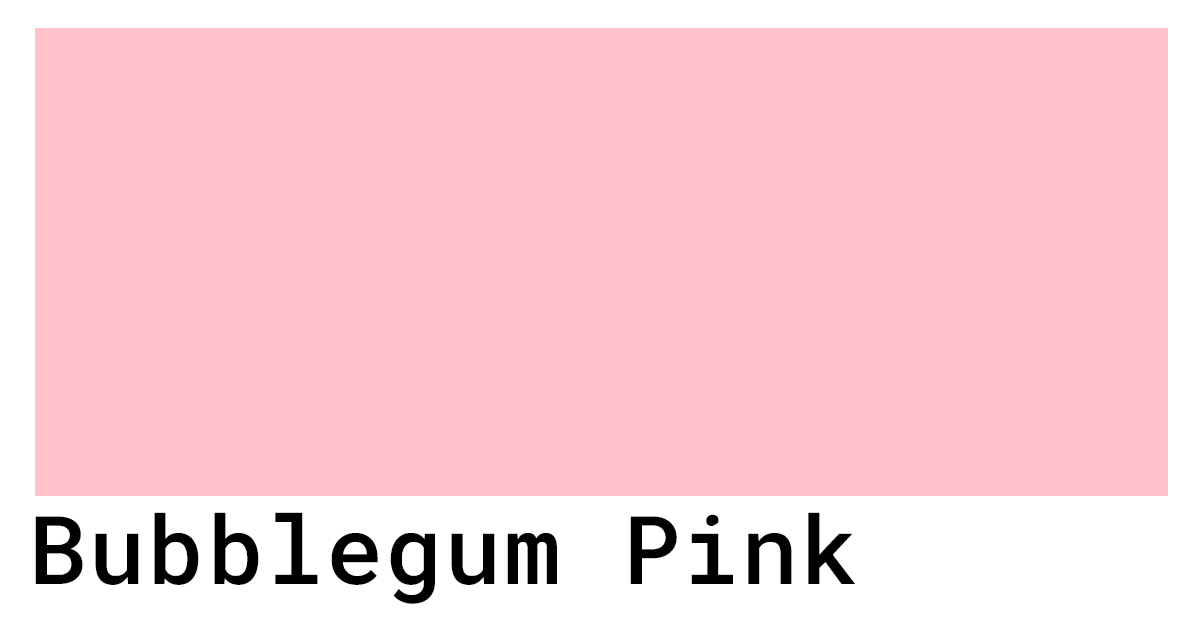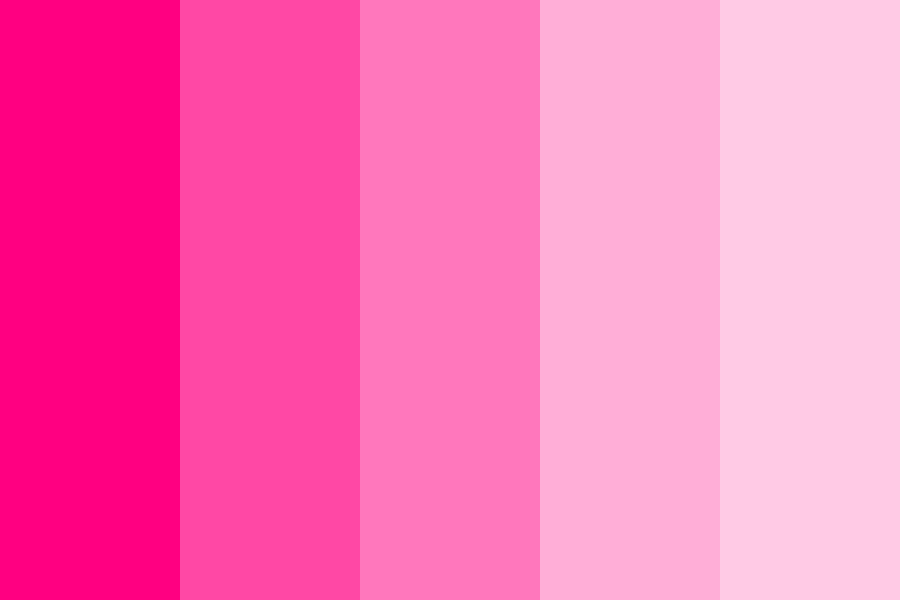Get Inspired: Bubblegum Pink Ideas & Trends!
Is there a color that instantly evokes a sense of playful nostalgia and unwavering optimism? Bubblegum pink, a hue as sweet and effervescent as its namesake, possesses a unique ability to captivate and charm, making it a perennial favorite in the worlds of fashion, design, and popular culture.
More than just a color, bubblegum pink represents a mood, a feeling, a certain joie de vivre. It's the embodiment of youthful exuberance, a reminder of carefree days and the simple pleasures in life. The history of bubblegum pink, however, is more nuanced than its playful exterior suggests. Its journey from a confectionary treat to a coveted shade is a fascinating exploration of cultural shifts, technological advancements, and the enduring power of marketing and design.
The origins of bubblegum pink are intrinsically linked to the invention of bubble gum itself. In the late 1920s, Walter E. Diemer, an accountant for the Fleer Chewing Gum Company, stumbled upon the perfect recipe. He created a gum that was not only bubble-able but also a distinctive pink. The pink dye was the only color he had on hand, but it quickly became the signature of the product and helped to popularize the treat. This choice, a stroke of marketing genius, cemented the color's association with fun, frivolity, and the burgeoning youth culture of the era. This specific shade, initially accidental, became synonymous with this new form of entertainment. It resonated with consumers, creating a visual identity that set it apart from other, more traditional, gum products.
The Second World War temporarily muted the color's popularity. However, after the war, the color resurfaced with a vengeance. The post-war period saw a surge in consumerism and a desire for optimism and vibrancy. Bubblegum pink, with its cheerful disposition, perfectly embodied the hopeful spirit of the era. It found its way into clothing, home decor, and even automobiles, becoming a symbol of a generation eager to embrace a brighter future. Think of the iconic pink kitchens of the 1950s, the flamboyant cars, and the playful fashion trends. Bubblegum pink was more than just a color; it was a statement.
In the world of fashion, bubblegum pink has consistently made its presence felt. From the classic silhouettes of the mid-20th century to the contemporary designs of today, the color has been a staple for designers seeking to inject a dose of playfulness and sophistication into their collections. Its a color that can be both bold and subtle, adaptable to different styles and trends. The choice of bubblegum pink can vary, from a vibrant, saturated hue to a softer, more pastel variation. Each variation provides a different emotional resonance, making it suitable for diverse creative expressions.
The color's versatility has made it a favorite for both haute couture and high-street fashion. Designers have used bubblegum pink in everything from elegant evening gowns to everyday casual wear, demonstrating its ability to transcend the boundaries of occasion and style. It also lends itself to layering, creating a stunning effect when combined with contrasting colors like black, white, or even other pastels. Accessories like bags, shoes, and jewelry further enhance its appeal, providing a pop of color to any outfit.
The use of bubblegum pink in interior design is another testament to its enduring popularity. It can create a space that is inviting, uplifting, and on-trend. However, its also a color that can easily overwhelm, requiring careful consideration when choosing its application. Using bubblegum pink on walls creates an atmosphere of boldness and energy, ideal for spaces like playrooms or creative studios. Paired with more neutral shades like grey, white, or beige, it creates a sense of balance and sophistication. Adding bubblegum pink accents through furniture, artwork, or textiles can effortlessly inject personality and style into any room. The key is to strike a balance, to ensure that the color complements the overall aesthetic rather than overpowering it.
Different textures and materials influence how bubblegum pink appears. It can transform the mood of a room by changing its reflective properties depending on whether it's a matte, satin, or gloss finish. In spaces like bathrooms or kitchens, bubblegum pink tiles create a fun and unique look. In bedrooms, a soft bubblegum pink can evoke a sense of tranquility, promoting relaxation and comfort.
Beyond fashion and design, bubblegum pink has also made its mark in popular culture, particularly in movies, television, and music. It has frequently been used to symbolize femininity, youth, and often, a touch of rebellion. Its presence in movie posters and set design provides a visual cue to the audience about the story and themes. In music videos and album art, it can signal playfulness, confidence, or a specific artistic aesthetic. The constant visual presence reinforces its significance and strengthens its cultural ties.
Consider the iconic imagery of the movie "Grease," where bubblegum pink featured prominently in the costumes and set design, representing the fun and youthful energy of the 1950s. Similarly, in contemporary media, the color continues to be used as a powerful tool to evoke specific emotions or convey certain messages. It is used in modern films and television shows to indicate a characters personality or the themes of a scene.
The rise of social media and digital platforms has further amplified the prominence of bubblegum pink. It is a visually striking color that photographs well, making it a favorite among influencers and content creators. It's become synonymous with aesthetics, aspirational lifestyles, and visually appealing content. Platforms like Instagram and Pinterest are awash with images of bubblegum pink, reinforcing its status as a trendy and fashionable color.
The colors adaptability has allowed it to continue to thrive within the ever-evolving digital landscape. This includes the growth in online fashion and design. Companies utilize bubblegum pink in their branding and visual identity as an integral element to stand out. Bubblegum pinks prevalence also extends into user interface design and web design, and this contributes to its presence in digital spaces.
The appeal of bubblegum pink also relies on its inherent duality. It is simultaneously playful and sophisticated, making it adaptable to a range of demographics and tastes. While it undoubtedly evokes a sense of youth and fun, it can also convey a sense of luxury and elegance when paired with the right textures and design elements. The versatility has allowed it to remain popular across various generations and tastes.
Modern designers and consumers have adopted bubblegum pink, embracing its optimistic tone and vibrant presence. It goes hand in hand with design trends and the wider cultural shifts that influence the color's continued relevance. The colors use is frequently seen, from fashion runways to interior design projects. It is an integral part of current pop culture trends.
In conclusion, bubblegum pink is far more than just a color; it is a cultural icon, a symbol of optimism, and a testament to the enduring power of design and marketing. Its journey from a simple confectionary creation to a widely embraced element across fashion, design, and popular culture demonstrates its unique appeal. Bubblegum pink's flexibility and ability to adjust to trends, while still retaining its innate charm, ensures that it will continue to captivate and delight for many years to come. Its ability to adapt, resonate, and evolve with each generation solidifies its standing as a color that will never truly go out of style.


